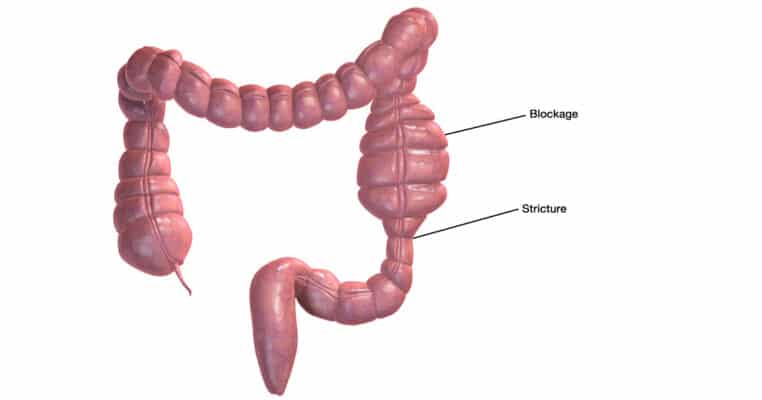What is a stricture
Having intestinal strictures from Crohn’s Disease means that there is narrowing in a specific area within the intestine. When inflammation is present, the body will try to heal itself causing scar tissue that can build up over time.
Bowel obstructions can occur when the scar tissue causes narrowing, making it difficult for food and waste to move properly throughout the gastrointestinal tract. The ileum, the last portion of the small intestine, and the ileocecal valve, the area from the small intestine to the large intestine, are the most common sites of strictures.
Strictures can be found in other areas of the GI tract as well. Chronic relapsing of Crohn’s disease can cause stricturing disease making it a complication of IBD. Procedures including strictureplasty and/or surgeries can help with complicated strictures. The two most common types of bowel strictures are fibrotic strictures and inflammatory strictures.
Nutrition and Stricturing IBD
Feeling symptoms after consuming a food item doesn’t mean it caused harm to your body. While it may cause a trigger or an uptick in your symptoms, it’s important to remember that it doesn’t mean it will cause you to flare. Inflammation from foods can occur when certain food items are consumed in excess over a period of time, rather than in moderation.
Foods that have been associated with inflammation include ultra-processed foods with certain additives along with oils that contain myristic acid. Remember that it’s not about restriction and more about widening the diet and making it more diverse.
Speaking to your doctor about inflammation and the history of your IBD is also crucial when making any dietary changes. Following a low residue or a low fiber diet temporarily may be something to consider if strictures and inflammation are present.
It is important to remember that following a low fiber diet long-term is not recommended. Below are some examples of foods that are recommended to consume while others showing foods to limit and/or avoid temporarily. Remember that we can always modify the texture of fiber rather than excluding it completely from the diet. Fiber provides us with many beneficial properties and should be consumed regularly.
Fibrous foods to consume with stricturing disease (adaptions may be temporary)
- Well cooked vegetables without skins
- Purée vegetables
- Soft baked potato without the skin
- Smoothies
- Fruits including bananas and avocados
- Smooth nut butters- avoiding crunchy pieces
- Blended beans
- Apple sauce
Fibrous foods to avoid with stricturing disease (may be temporary and progressed as tolerated)
- Fruits with skins (apples, berries, oranges, and other acidic fruits)
- Vegetables with skins
- Nuts
- Seeds
- Beans (not blended)
- Kernels
Key Takeaways
Nutrition for IBD can be confusing at times and it’s so important that your nutritional needs are individualized since your IBD is unique to you. There are a few nutrition recommendations that can be included to help minimize symptoms in those with stricturing disease. It can be difficult to prevent strictures.
Therapeutics such as biologics, surgical resections, and procedures can help with managing strictures. From a nutrition standpoint, certain foods should be reduced for a specific period of time or as recommended by your dietitian and doctor. When IBD is active, it is important to reduce symptoms by decreasing your intake of insoluble fiber and certain beverages including caffeine to decrease stool output.
